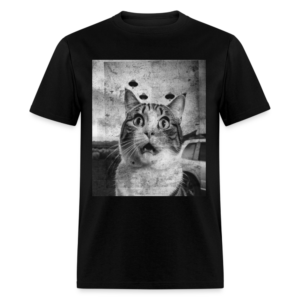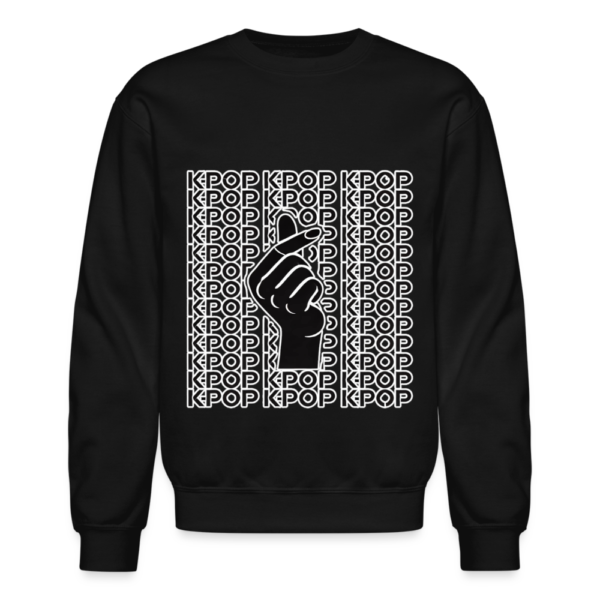Your cart is currently empty!
Category: MUSIC
SZA’s Vision: From Chart-Topping Music to Farming for Community Impact?
SZA, born Solána Imani Rowe, has solidified her place as one of the most influential voices in modern R&B. With her soulful melodies, introspective lyrics, and genre-blending artistry, SZA has captured the hearts of millions worldwide. Yet, her recent musings about transitioning from music to a life of peace and philanthropy have sparked curiosity and admiration among her fans.
The Rise of SZA
Hailing from Maplewood, New Jersey, SZA’s journey to stardom was anything but conventional. She initially pursued marine biology but later shifted to focus on her passion for music. After joining Top Dawg Entertainment in 2013, SZA released her debut EP, Z, which showcased her unique sound and storytelling ability.
Her breakthrough came with the release of her 2017 album, Ctrl, a masterpiece that delves into themes of love, self-doubt, and empowerment. The album earned critical acclaim and multiple Grammy nominations, solidifying SZA as a force in the music industry.
Her follow-up album, SOS, only heightened her influence, debuting at No. 1 on the Billboard 200 and earning her widespread praise for its vulnerability and innovation.
SZA’s Vision for the Future
In a recent social media post, SZA shared her desire to create “peaceful children’s music” for her final two albums before stepping away from the limelight. She envisions a simpler life as a farmer, dedicating her time to growing produce and donating it to underserved communities.
This statement, while inspiring, also leaves room for interpretation. Fans have speculated that SZA’s words may carry a tongue-in-cheek undertone or reflect frustration with the demands of her record contract. Artists often find themselves bound by contractual obligations that can feel creatively stifling, and SZA’s candidness about her plans may hint at a desire for freedom and autonomy.
The Pressure of Music Contracts
The music industry is notorious for its complex and restrictive contracts, which often require artists to deliver a specific number of albums. These agreements, while essential for launching careers, can sometimes become burdensome, especially for artists seeking to evolve creatively or explore new paths.
SZA’s desire to fulfill her contract by making peaceful children’s music could be her way of addressing these challenges while maintaining artistic integrity. Many fans see this as a clever, if not slightly sardonic, approach to meeting her obligations on her own terms.
This sentiment isn’t unique to SZA. Artists like Prince, Frank Ocean, and JoJo have spoken openly about their struggles with record labels and the lengths they’ve gone to regain control of their art. SZA’s openness about her plans places her within this broader narrative of artists pushing back against the constraints of the industry.
The Appeal of Peaceful Children’s Music
Children’s music holds a unique charm, offering the opportunity to shape young minds and create lasting positive memories. If SZA’s plans are sincere, her entry into this genre could be transformative. Her ability to craft soothing, authentic melodies could redefine children’s music, bringing emotional depth and creativity to a genre often dismissed as simplistic.
At the same time, framing her final albums as peaceful children’s music could also be SZA’s playful critique of industry expectations—an expression of her individuality and wit.
SZA’s Farming Dream
SZA’s dream of becoming a farmer is a testament to her grounded nature and commitment to giving back. Farming is not just about growing crops—it’s about nurturing the environment and promoting health and well-being.
Her vision of donating produce to underserved communities highlights her desire to address food insecurity, a pressing issue in many parts of the world. Whether this dream is an earnest goal or a metaphor for finding peace away from the demands of fame, it speaks volumes about her values.
The Impact of Philanthropy in Music
SZA’s plans to transition into philanthropy highlight a larger trend among artists seeking purpose beyond their craft. Music is a powerful medium for change, but many artists, like SZA, recognize the importance of taking actionable steps to address social issues.
Her vision of blending music with community service could inspire other artists to consider how their talents and resources can create lasting impact. This ripple effect could lead to more initiatives focused on sustainability, education, and social equity.
Fan Reactions
Fans have expressed mixed emotions about SZA’s announcement. While many admire her selflessness and forward-thinking vision, others wonder if her statements reflect deeper frustrations with the music industry.
Social media has been abuzz with interpretations of her words, with some suggesting that her plans to “go be a farmer” may be her way of playfully critiquing the pressures of fame and contractual obligations. Whether sincere or satirical, SZA’s vision has sparked meaningful conversations about the balance between artistic freedom and industry demands.
SZA’s Legacy
Whether or not SZA decides to leave the music industry, her impact will undoubtedly endure. Her albums have become cultural touchstones, offering solace and empowerment to listeners worldwide.
Her transition into farming and philanthropy could redefine what it means to be a multi-faceted artist in the 21st century. By prioritizing community and sustainability, SZA is setting an example of how success can be leveraged for meaningful change.
The Future of Music and Philanthropy
SZA’s potential departure from the music scene raises important questions about the role of artists in shaping societal values. As fans, we often focus on an artist’s output, but SZA’s announcement reminds us of the importance of supporting their personal growth and aspirations.
Her journey also underscores the need for more conversations about food insecurity, sustainability, and the power of art to drive social change. Whether her words were meant literally or as a witty commentary on her circumstances, SZA is encouraging her audience to think critically about the intersection of art, industry, and impact.
Conclusion
SZA’s announcement about her future plans has ignited a wave of admiration and speculation. From creating peaceful children’s music to becoming a farmer and addressing food insecurity, her vision exemplifies how artists can use their platforms for greater good.
Whether these plans are heartfelt or a clever response to the challenges of fame and record contracts, SZA’s legacy will remain one of innovation, resilience, and compassion. Whether she’s topping the charts or tending to crops, SZA continues to inspire fans and redefine success.
I Can’t | Music Studio Unisex Classic T-Shirt
$19.99I Can’t | Music Studio Unisex Classic T-Shirt. Show off your passion for music with the “I Can’t | Music Studio” Unisex Classic T-Shirt. Designed for musicians, producers, and music lovers, this comfortable tee is perfect for studio sessions, casual outings, or expressing your creative vibes.
-

Hungry and Humble Football Player Flapping Arms Touchdown Celebration Unisex Classic T-Shirt #philly
$19.99 Select options This product has multiple variants. The options may be chosen on the product page -

Africatown in Philly Phrase Unisex Classic T-Shirt
$13.99 Select options This product has multiple variants. The options may be chosen on the product page -

Vintage Funny Cat Selfie UFO Alien Invasion Unisex Classic T-Shirt
$13.99 Select options This product has multiple variants. The options may be chosen on the product page -

Vintage Philly Underdogs German Shepherds Unisex Classic T-Shirt
$9.99 Select options This product has multiple variants. The options may be chosen on the product page -

Voxel Art Hockey Players Unisex Classic T-Shirt
$19.99 Select options This product has multiple variants. The options may be chosen on the product page
————————————————
We use AI GPT Chatbots to help with our content and may get some things wrong.
————————————————-
-
Phish: The Groundbreaking Technique That Revolutionized Music and Inspired Generations
When it comes to boundary-pushing bands, Phish stands at the top of the mountain. The group has been an enigma and a beacon of creativity for music lovers around the world, crafting a sound that is all their own while influencing generations of musicians across genres. With their complex compositions, eclectic influences, and unrivaled improvisational prowess, Phish has left an indelible mark on the music scene. Let’s dive into what made Phish so groundbreaking, how their technique changed the game, who tried to mimic their style, and how their legacy still resonates in music today.
The Birth of Phish’s Unique Sound
Formed in 1983 at the University of Vermont by Trey Anastasio, Mike Gordon, Page McConnell, and Jon Fishman, Phish quickly became known for their freewheeling, genre-blending style that pushed the limits of what rock, jazz, funk, and bluegrass could be. From the outset, Phish was not just another rock band—they were a musical laboratory, constantly experimenting with sounds, textures, and forms.
What set Phish apart from their contemporaries was their fearlessness in blending seemingly disparate elements into one cohesive experience. They weren’t content with staying within the confines of traditional song structures. Instead, they embraced extended jams, complex rhythms, and spontaneous improvisation. Their unique approach to music-making created an ever-evolving soundscape that was both unpredictable and electrifying.
The Power of Improvisation: Phish’s Secret Weapon
One of Phish’s most groundbreaking techniques was their use of improvisation, and it’s what really set them apart from many of their peers in the 1990s and beyond. While many bands would stick to the formula of rehearsed setlists and predictable solos, Phish took it to the next level. Their live shows were famously unpredictable, with songs morphing into new, uncharted territory. For Phish, no two shows were ever the same, and the real magic happened when they went off-script.
What made their improvisational jams so remarkable was their ability to weave together a deep musical conversation between all four members. Each member of Phish brought something different to the table. Trey Anastasio’s virtuosic guitar work, combined with Page McConnell’s keyboard wizardry, Mike Gordon’s bass lines, and Jon Fishman’s drumming, created a unique synergy that allowed them to communicate through music in real time. The chemistry was undeniable, and their live performances were often a masterclass in group improvisation.
Phish’s improvisational style also drew heavily from jazz, with its emphasis on spontaneity and interaction between the musicians. But what Phish did was take that jazz sensibility and infuse it with the energy and drive of rock. The result was a unique blend that was instantly recognizable.
The Influence of Phish: Who Tried to Mimic It?
Phish’s rise to prominence in the ’90s didn’t go unnoticed. Their groundbreaking techniques inspired a whole wave of bands who sought to mimic their unique approach to improvisation, extended jams, and genre fusion. The influence of Phish can be felt in the jam band scene, which grew exponentially during the ’90s and into the 2000s. Bands like the Dave Matthews Band, Widespread Panic, and the String Cheese Incident all owe a great deal to Phish’s influence in terms of their live shows and musical experimentation.
But it wasn’t just jam bands who sought to mimic Phish’s approach. The rock world also felt the ripples of Phish’s impact. Artists like Radiohead, The Flaming Lips, and even the Red Hot Chili Peppers took inspiration from Phish’s ability to mix complex musical ideas with a playful, experimental spirit. These bands recognized the power of live performances, where the interaction between the musicians could transcend the constraints of a recorded track and create something truly dynamic.
Even in the world of electronic music, Phish’s influence can be felt. The improvisational, jam-heavy nature of their shows became a model for the more experimental side of electronic music, where DJs and producers aim to craft live sets that feel fresh and spontaneous, much like Phish’s legendary concerts.
Phish’s Legacy: Shaping the Future of Music
Phish’s impact on the music world continues to reverberate to this day. Their ability to stay true to their roots while constantly evolving their sound set the stage for future artists and bands to break free from traditional genres and experiment with different sonic textures. They showed musicians everywhere that it was okay to take risks and let the music evolve in real-time.
In the 2000s, as many rock bands leaned heavily into studio production and pre-programmed sounds, Phish stayed true to their roots by keeping live performances at the center of their artistic mission. Their influence helped ensure that improvisation remained a core element of live rock music, even as the landscape of popular music shifted.
More than that, Phish’s commitment to their fanbase has set a precedent for how bands interact with their audience. They have one of the most dedicated followings in all of music, and their live shows often feel like a communal experience, with fans reveling in the unpredictability of each performance. Phish helped to create a live music scene where the fans are just as much a part of the show as the band itself.
Phish’s Technique: Innovation in the Moment
One of the key aspects of Phish’s groundbreaking style was their ability to innovate in the moment. A Phish concert isn’t just a series of songs; it’s a journey. The band would often extend a song into uncharted territories, blending different genres and influences with each note. These extended jams weren’t just improvisations for the sake of improvisation; they were carefully crafted, weaving a tapestry of musical ideas that could range from dissonant chaos to harmonic bliss.
Their technique of seamlessly shifting between different time signatures, changing keys on a dime, and layering complex rhythms became their signature. Phish’s music never felt rigid—everything was fluid, organic, and driven by the band’s collective energy. Their ability to transition from one musical idea to the next without losing momentum was a testament to their technical skill and deep understanding of music theory.
But it wasn’t just about showing off technical prowess. Phish had a playful, almost childlike approach to music, constantly surprising both their fans and each other. Whether they were diving into a bluegrass breakdown, a funk groove, or a full-on rock anthem, Phish always kept the energy alive with their infectious enthusiasm.
Phish’s Legacy Lives On
Today, Phish continues to be an inspiration to countless musicians. Their influence can be heard in the music of artists who share their spirit of adventure and creativity. From jam bands to experimental rock to modern electronic acts, Phish has left an enduring imprint on how musicians approach live performance and songwriting.
Their continued success and unwavering commitment to their craft show that their approach to music wasn’t just a passing trend—it was a new way of thinking about what music could be. Phish showed us that the heart of music isn’t just in the notes you play, but in the freedom you allow yourself to create and explore.
In the end, Phish’s influence on music is undeniable. From their groundbreaking improvisation techniques to their ability to inspire future generations of musicians, Phish has changed the way we think about live performance, musical experimentation, and what it means to be truly free in the world of music.
Vintage Welcome to Philly Philly Unisex Classic T-Shirt
$13.99Get ready to rock with the Vintage ‘Welcome to Philly’ Concert Music Event Unisex Classic T-Shirt! Perfect for concert-goers who know Philly’s got the best vibes—just don’t forget your dancing shoes!
-

Hungry and Humble Football Player Flapping Arms Touchdown Celebration Unisex Classic T-Shirt #philly
$19.99 Select options This product has multiple variants. The options may be chosen on the product page -

Africatown in Philly Phrase Unisex Classic T-Shirt
$13.99 Select options This product has multiple variants. The options may be chosen on the product page -

Vintage Funny Cat Selfie UFO Alien Invasion Unisex Classic T-Shirt
$13.99 Select options This product has multiple variants. The options may be chosen on the product page -

Vintage Philly Underdogs German Shepherds Unisex Classic T-Shirt
$9.99 Select options This product has multiple variants. The options may be chosen on the product page -

Voxel Art Hockey Players Unisex Classic T-Shirt
$19.99 Select options This product has multiple variants. The options may be chosen on the product page
————————————————
We use AI GPT Chatbots to help with our content and may get some things wrong.
————————————————-
-
Anita Baker: The Songstress Who Redefined Soul Music
Anita Baker isn’t just a singer; she’s a living legend. Her voice is velvet, her delivery is pure magic, and her influence on music—particularly soul, R&B, and jazz—is monumental. She’s the queen of Quiet Storm, the sound that filled late-night radio with warmth and intimacy. From the first note of Rapture to her legendary live performances, Baker’s artistry has left an indelible mark on the music world.
In this post, we’ll dive deep into what makes Anita Baker’s technique so groundbreaking, explore the artists who’ve tried to emulate her, and celebrate her incredible influence on music both past and present.
Anita Baker’s Technique: A Masterclass in Vocal Artistry
If you’ve ever listened to Anita Baker, you know she doesn’t just sing—she transports. Her technique combines precision, emotion, and an effortless ability to tell stories with her voice. Let’s break down what makes her so unique:
1. Tone and Texture
Anita Baker’s voice is instantly recognizable. It’s rich, warm, and soulful, like a perfectly aged wine. Her contralto range—lower and huskier than most female vocalists—is a cornerstone of her sound. It gave her music a distinctive, almost conversational intimacy.
2. Phrasing and Dynamics
Baker’s phrasing is unmatched. She knows exactly how to shape a lyric, pausing in all the right places and letting her voice swell with emotion. Her dynamic control allows her to shift from a whisper to a full-throated belt without ever losing the listener.
For example, in her iconic song “Sweet Love,” she glides effortlessly between soaring highs and delicate lows, making each line feel like a personal confession.
3. Jazz Influences
One of Baker’s most distinctive traits is her incorporation of jazz techniques into her R&B singing. She uses melisma sparingly and effectively, adding subtle vocal runs and inflections that enhance the emotion without overpowering the song.
4. Emotional Resonance
Anita Baker is a master of emotional delivery. Her voice isn’t just about hitting the right notes—it’s about making you feel every word. Whether she’s singing about love, heartbreak, or hope, her performances are deeply personal and universally relatable.
5. Songwriting and Song Selection
While Anita Baker didn’t write all her songs, she had an impeccable ear for material that suited her voice and style. She worked closely with producers and writers to craft songs that balanced sophistication and accessibility, resulting in timeless hits like “Caught Up in the Rapture” and “Giving You the Best That I Got.”
Why Anita Baker’s Style Was Groundbreaking
Anita Baker arrived on the scene in the early 1980s, a time when disco was fading, and mainstream R&B was becoming more synth-heavy and dance-oriented. Baker offered something completely different: a return to the lush, emotive sound of classic soul, infused with jazz sophistication.
1. Quiet Storm Revival
Anita Baker became synonymous with the Quiet Storm genre, which blends soft R&B, jazz, and soul into a smooth, sensual sound. While Quiet Storm was already popular in the 1970s, Baker revitalized it for a new generation, bringing it back into the mainstream.
2. Elevating R&B to Art
Baker’s music blurred the lines between R&B and jazz, elevating the former to a level of sophistication that earned her critical acclaim. Albums like Rapture and Compositions were as much about musicality as they were about vocal performance.
3. A Role Model for Women in Music
In an industry often dominated by trends, Anita Baker stayed true to her artistry. She took creative control of her career, proving that women in music could dictate their own path while achieving both commercial and critical success.
Who Tried to Mimic Anita Baker?
Imitation is the sincerest form of flattery, and Anita Baker has inspired countless vocalists who’ve tried to capture her magic. While no one can truly replicate her, her influence is evident in the work of many artists.
1. Sade
Sade Adu, like Baker, mastered the art of blending soul and jazz into a smooth, sophisticated sound. While Sade’s style is more understated, the parallels in tone, phrasing, and emotional delivery are undeniable.
2. Toni Braxton
Toni Braxton is often seen as a spiritual successor to Anita Baker. With her own deep contralto voice and emotive delivery, Braxton drew heavily from Baker’s blueprint while carving out her own identity in the ‘90s R&B scene.
3. Alicia Keys
Though Alicia Keys leans more toward modern pop and R&B, her ballads and piano-driven songs reflect Baker’s emphasis on emotional connection and timeless elegance.
4. Lalah Hathaway
As the daughter of soul legend Donny Hathaway, Lalah Hathaway had big shoes to fill—and she did so with a style reminiscent of Anita Baker. Her warm tone and jazz-influenced delivery make her one of Baker’s most obvious torchbearers.
5. Contemporary Artists
Artists like H.E.R., Jazmine Sullivan, and Snoh Aalegra also draw from Baker’s playbook, incorporating emotional depth, sophisticated arrangements, and jazz elements into their music.
How Anita Baker Influenced Music Then and Now
Anita Baker’s influence extends far beyond her own hits. She reshaped the landscape of R&B, proving that sophistication and substance could be commercially successful.
1. The R&B Renaissance of the ‘80s and ‘90s
Baker’s success paved the way for a wave of artists who emphasized vocal talent and timeless songwriting. Without Anita Baker, there’s no Toni Braxton, no Whitney Houston ballads, and perhaps no neo-soul movement.
2. Quiet Storm’s Longevity
Baker’s contribution to Quiet Storm ensured the genre’s longevity. Her music remains a staple on Quiet Storm radio stations, influencing how modern R&B is curated and consumed.
3. Empowering Independent Artists
By taking creative control of her career, Baker inspired other artists to do the same. Her focus on quality over trends has been a model for musicians looking to build long-lasting careers.
4. Cross-Generational Appeal
Baker’s music remains as relevant today as it was in the ‘80s. Her timeless songs continue to resonate with audiences young and old, introducing her to new generations of listeners.
Anita Baker’s Legacy: Timeless and Unmatched
Anita Baker’s impact on music is undeniable. She didn’t just dominate the charts—she redefined what it meant to be an artist in R&B. Her voice, her style, and her dedication to her craft have left a legacy that few can match.
1. Her Timeless Catalog
Albums like Rapture, Giving You the Best That I Got, and Compositions aren’t just classics—they’re milestones in music history. Songs like “Sweet Love” and “You Bring Me Joy” are eternal reminders of her brilliance.
2. Continuing Influence
Even today, you can hear echoes of Anita Baker in the music of artists who value substance over flash. Her emphasis on storytelling and emotional resonance has become a standard for anyone aspiring to greatness in R&B.
The Final Note: Thank You, Anita
Anita Baker isn’t just an artist—she’s a gift. She’s given us a soundtrack for love, heartbreak, and everything in between. Her music is a masterclass in artistry, reminding us that great songs don’t just entertain—they touch the soul.
So here’s to Anita Baker, the woman who gave us her best and changed music forever. Thank you for your voice, your artistry, and your timeless legacy. The world is better because of your music.
-

Hungry and Humble Football Player Flapping Arms Touchdown Celebration Unisex Classic T-Shirt #philly
$19.99 Select options This product has multiple variants. The options may be chosen on the product page -

Africatown in Philly Phrase Unisex Classic T-Shirt
$13.99 Select options This product has multiple variants. The options may be chosen on the product page -

Vintage Funny Cat Selfie UFO Alien Invasion Unisex Classic T-Shirt
$13.99 Select options This product has multiple variants. The options may be chosen on the product page -

Vintage Philly Underdogs German Shepherds Unisex Classic T-Shirt
$9.99 Select options This product has multiple variants. The options may be chosen on the product page -

Voxel Art Hockey Players Unisex Classic T-Shirt
$19.99 Select options This product has multiple variants. The options may be chosen on the product page
————————————————
We use AI GPT Chatbots to help with our content and may get some things wrong.
————————————————-
-





